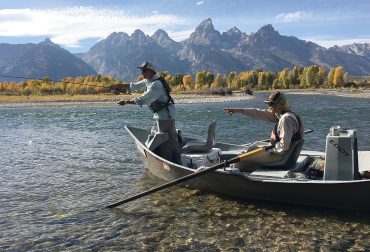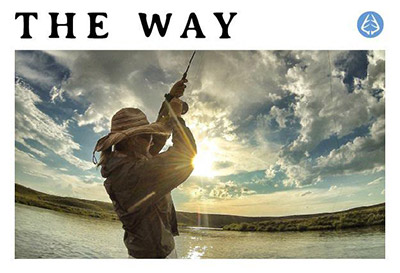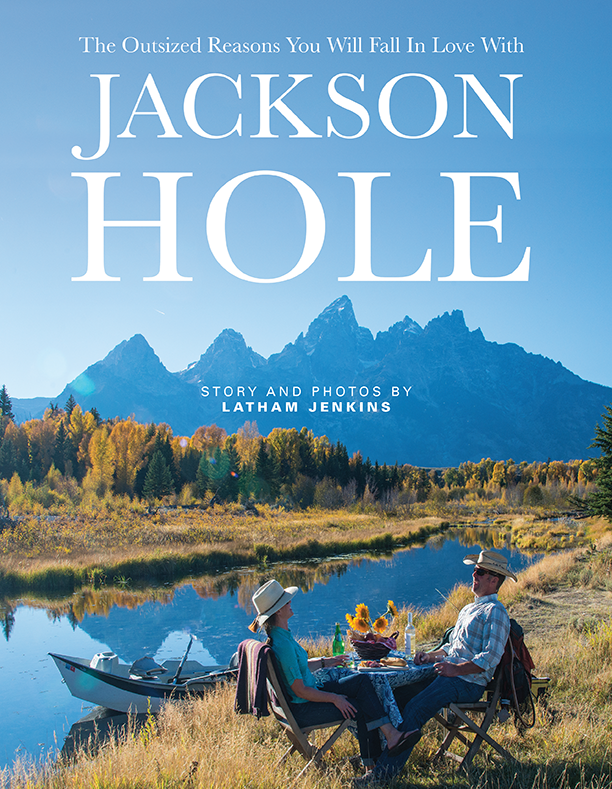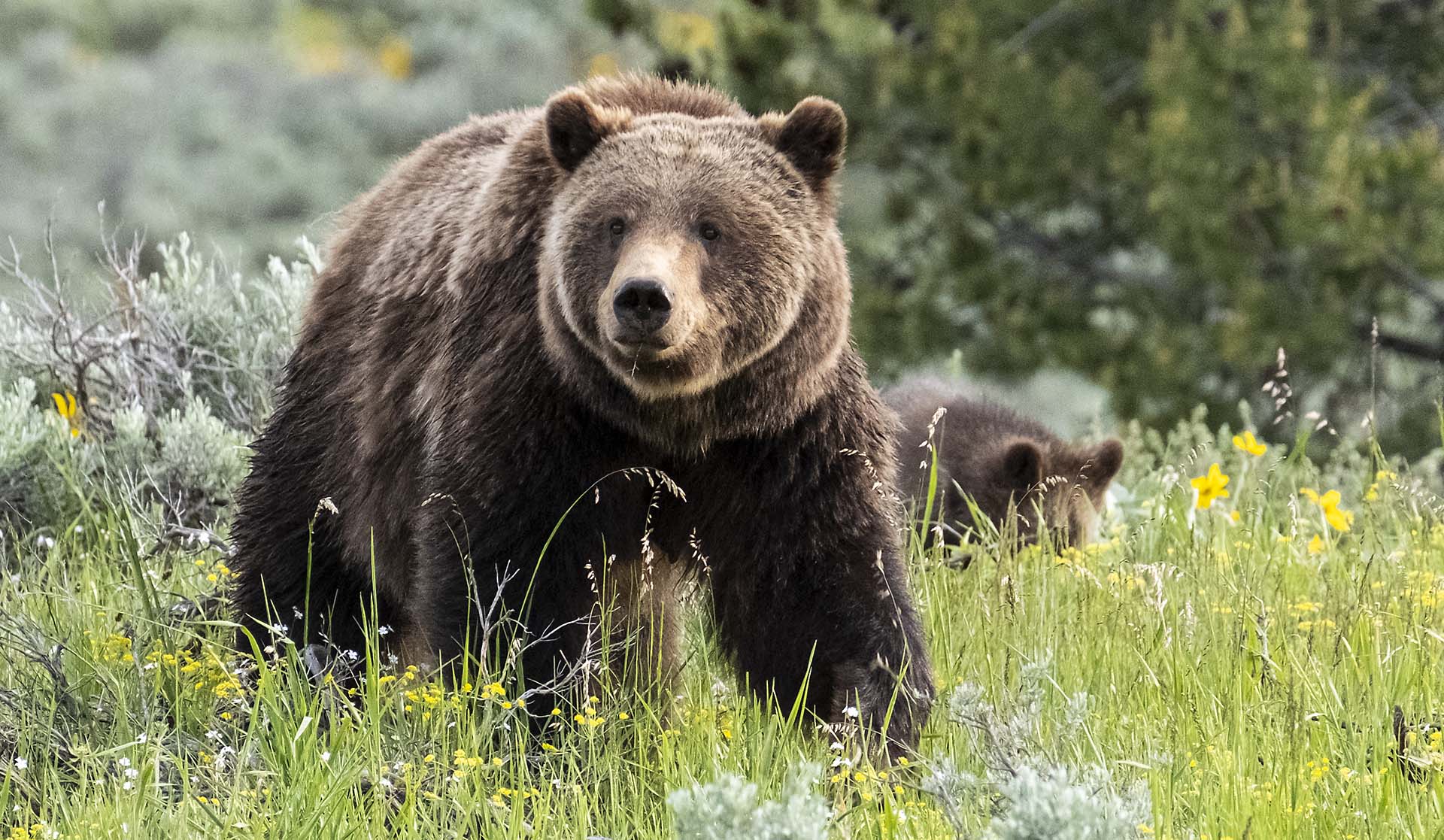
Grizzly Bear 399 in Grand Teton National Park
One of the most magical, unforgettable experiences in Jackson Hole is spending time with the grizzly bears of Grand Teton National Park. Tom Mangelsen, celebrated Jackson Hole-based wildlife photographer, has traversed the globe to capture stunning images of animals in their natural habitats. But nothing he’s seen, and no place he has been, are as special to him as the grizzly bears of Grand Teton National Park. Just to the north of Jackson Hole, some of the world’s most famous and beloved grizzlies are greeted each summer by locals and visitors alike, all thrilled to see them.
There’s no disputing that all of Jackson Hole’s wildlife is special. Our charmingly goofy moose that slosh through the wetlands, our regal bald eagles that soar over the Snake River on the hunt for Cutthroat Trout, our record-holding elk herd that calls the National Elk Refuge home; the list goes on. But there’s something about the grizzly bear that is exceptional. Beyond the truly astonishing animals themselves, the experience of seeing them in Grand Teton National Park is truly special and unforgettable.
The fact that it’s possible to see these majestic bruins from a safe perspective with such relative ease is supremely unique. And even more special is the window that it gives us into what grizzly lives are like, and what a special and important role they play in the ecosystem.
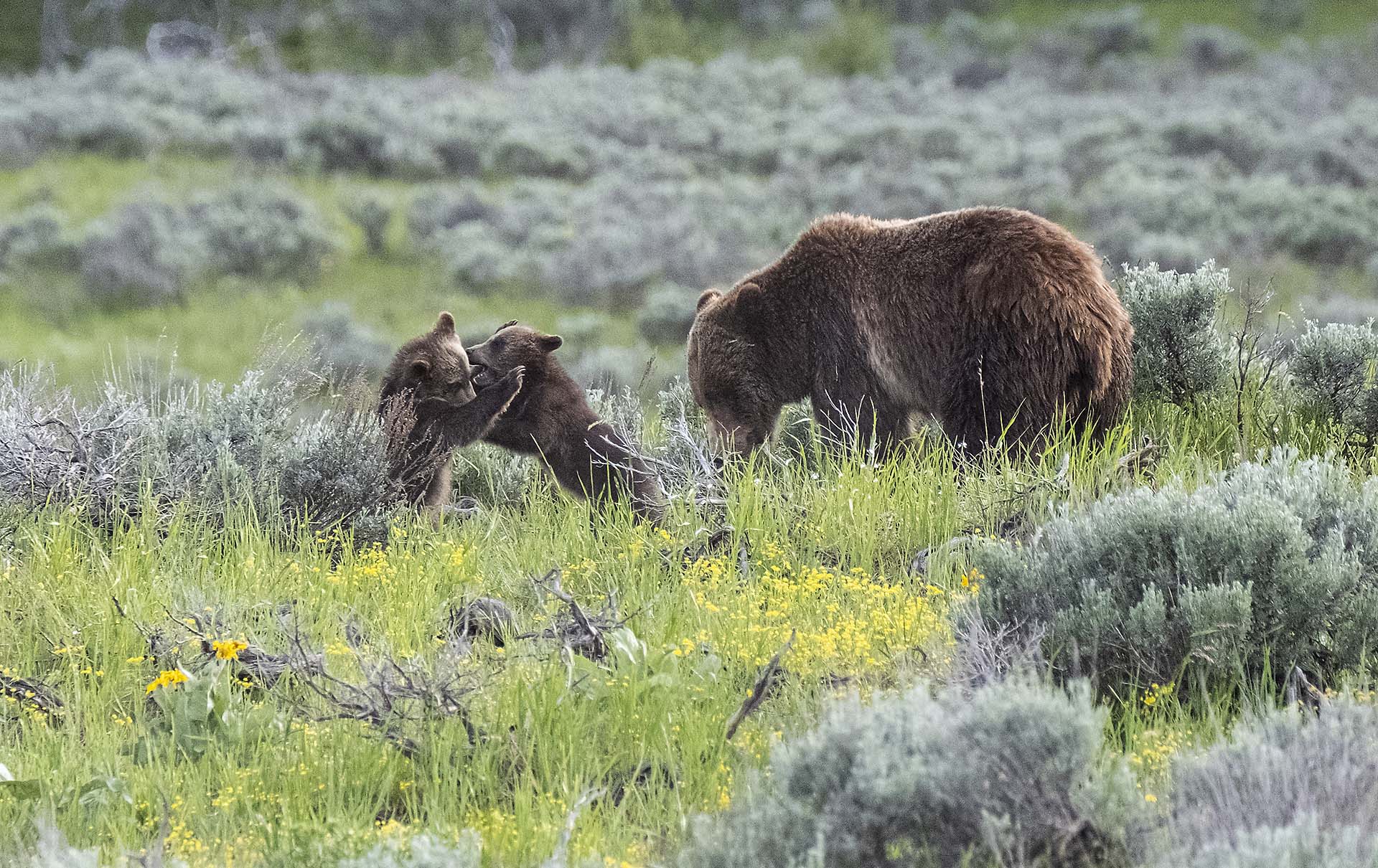
The World’s Most Famous Grizzly Bear: 399
In the heart of Grand Teton National Park lies a small seasonal waterway called Pilgrim Creek. Beginning high in the rugged mountains of the Bridger-Teton National Forest, the rocky rivulet tumbles down to the valley floor, and eventually pours into the Snake River. It’s along this unassuming little creek that the world’s most famous grizzly bear family greets their human fans.
This grizzly matriarch – known as 399, her research tag number – is now one of the oldest living wild grizzly bears. “She spends a lot of time here at Pilgrim Creek in the spring and fall,” explains Tom Mangelsen. “She hibernates in the Pilgrim Creek mountains in the wilderness in the wintertime.” In previous springs, she has emerged from hibernation with three sets of triplets, and multiple single cub litters. This year, to resounding amazement and joy, she emerged with quadruplets. That many cubs is about as likely as that many leaves on a clover.
“Four-cub litters are rare,” says Frank van Manen, a senior research biologist who oversees the Yellowstone region’s Grizzly Bear Study Team. “We have documented females producing cubs well into their early- to mid- 20s, but a litter of four at that age is definitely unique.”
Truly a wild superstar, 399 is the definition of a mama bear. Tom recalls observing her shepherding her cubs across the road, calling out to them, even “scolding” them to keep up. In that moment, he reflects, he appreciated what a profound glimpse that interaction was not only into this bear family, but all of the other grizzly bear families in the area.
“I love these bears,” he says. “399 is probably the most famous bear that ever lived. I don’t know how many millions of people have seen her. She’s great.” Tom’s work celebrating this amazing bear is showcased both in his downtown gallery, Images of Nature, as well as his book, Grizzlies of Pilgrim Creek.
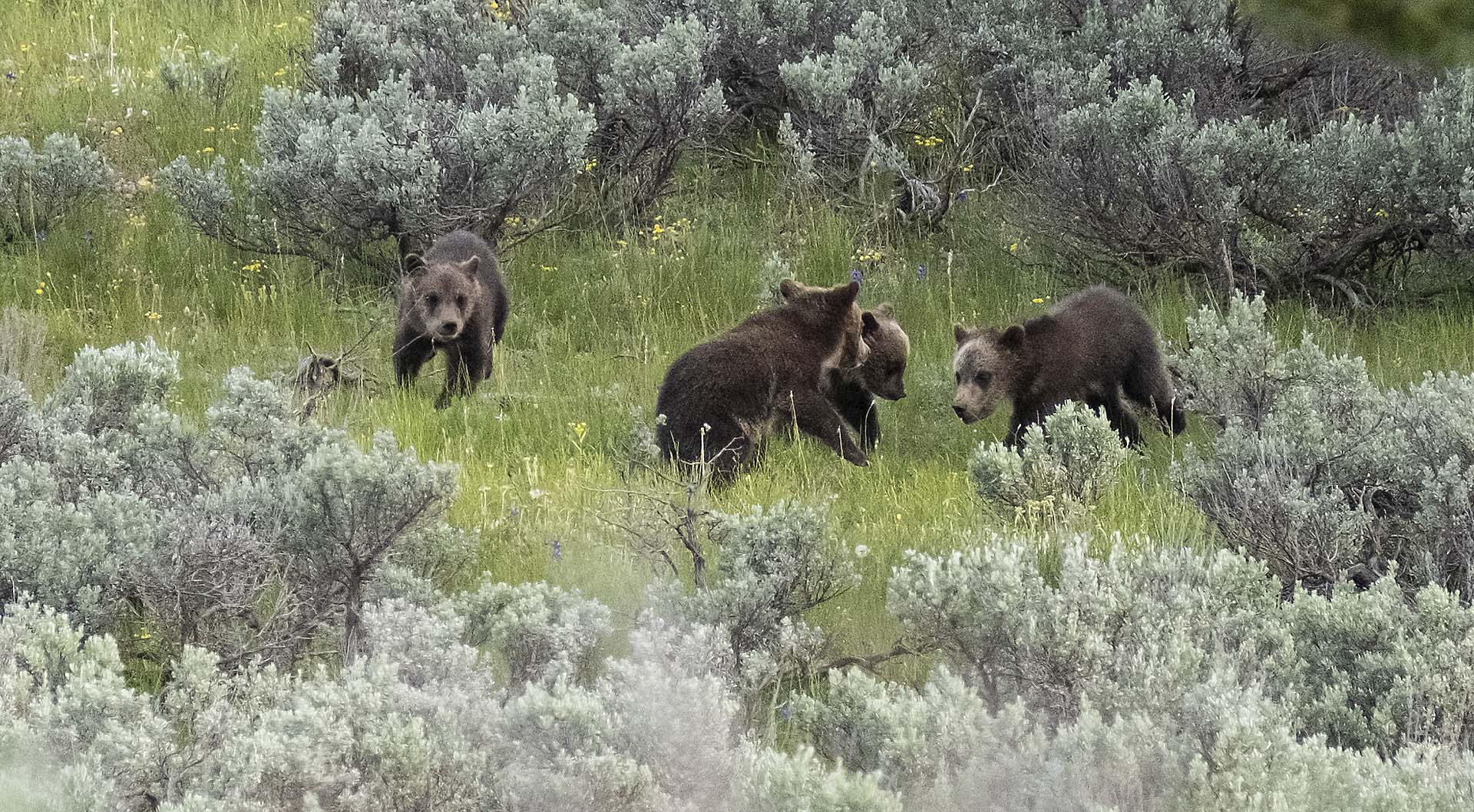
Seeing Grizzlies in Grand Teton National Park
“I have been guiding in Grand Teton and Yellowstone National Park for ten years and when I ask what wildlife visitors most want to see, the answer is more often ‘grizzly bears’ than any other animal. Moose come in second with wolves a distant third,” says professional wildlife guide Sarah Ernst. She’s accompanied thousands of visitors to Grand Teton National Park through Wildlife Expeditions of the Teton Science Schools. “I like to think that the grizzly is the most requested wild animal on tours because most visitors have urban or suburban lifestyles that cut them off nearly completely from the natural world, and we crave reconnection with wildness. We want to be a little afraid, to feel our hearts beat faster when a twig snaps in the woods, to be reminded that there is still a place where humans are not always in control of the world. Seeing a real wild grizzly through binoculars a few hundred yards away is a different and more valuable experience than seeing a captive one ten yards away in a zoo.”
And there are precious few places that you can see wild grizzlies in their natural habitat – certainly not in the Lower 48. “It’s real and authentic, interacting with the elements of its ecosystem – other bears, other predators, plants and prey animals and even the local geology – in a way that captive bears never get a chance to. As a guide it’s those interactions I try to highlight as we watch bears – what the behaviors the bear is exhibiting, and why.”
One major reason that grizzlies flourish in Grand Teton and Yellowstone National Parks is the sheer size of the untamed landscape. This massive swath of protected land is almost perfectly ecologically intact in ways that most other regions are not. Because of its healthy, well-balanced habitats – that are largely undisturbed by humans – the area is home to a full complement of wild predators large and small: bears, wolves, mountain lions, coyotes, foxes, wolverines, and more.
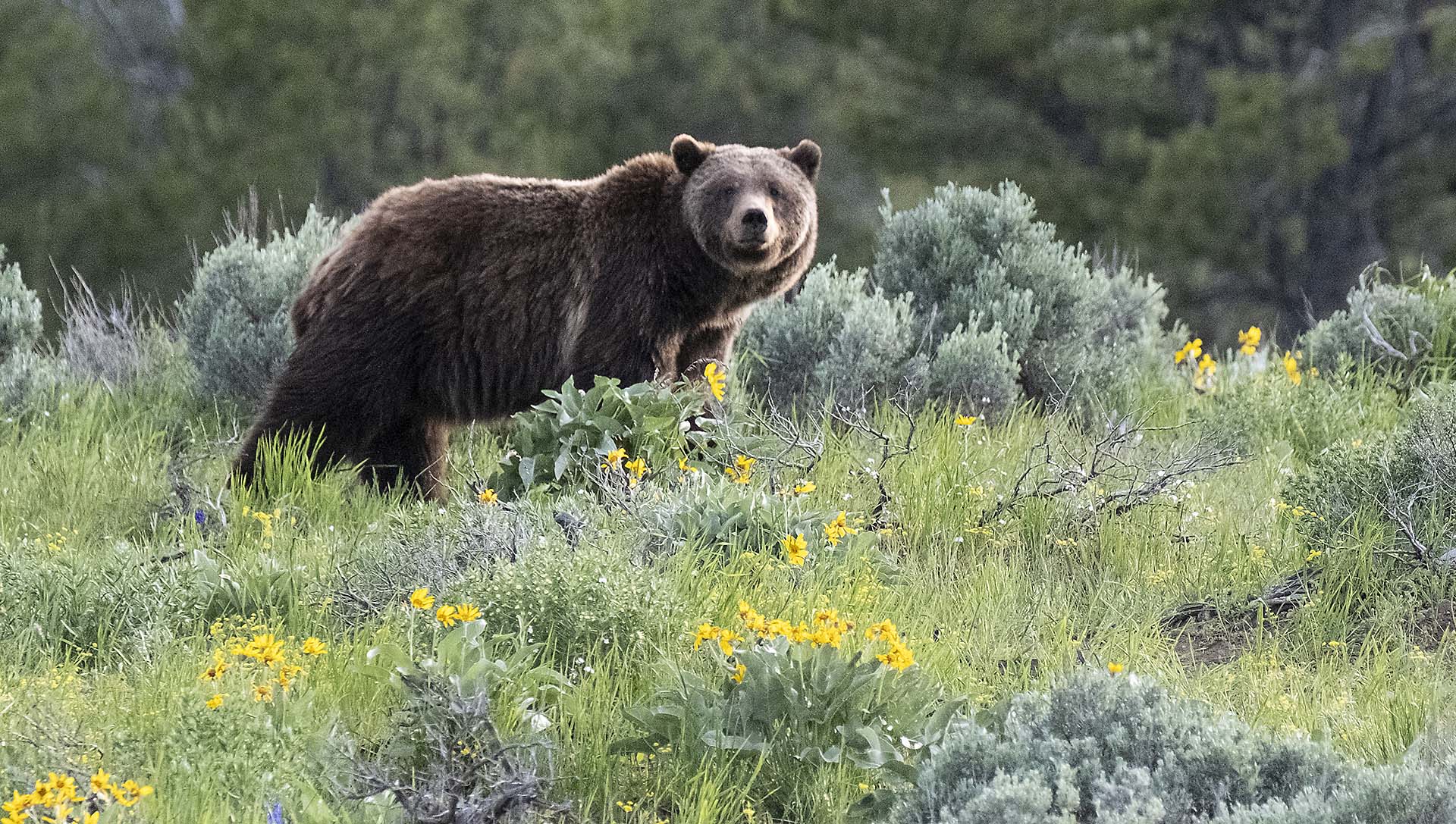
The Impact of the Grand Teton Grizzly Bears
After the privilege of watching a grizzly in the wild, you’re never quite the same. It’s such a deeply unique and powerful experience; it changes you a little. It grants you more respect and awe for the natural world, and the amazing creatures that we get to share Jackson Hole with.
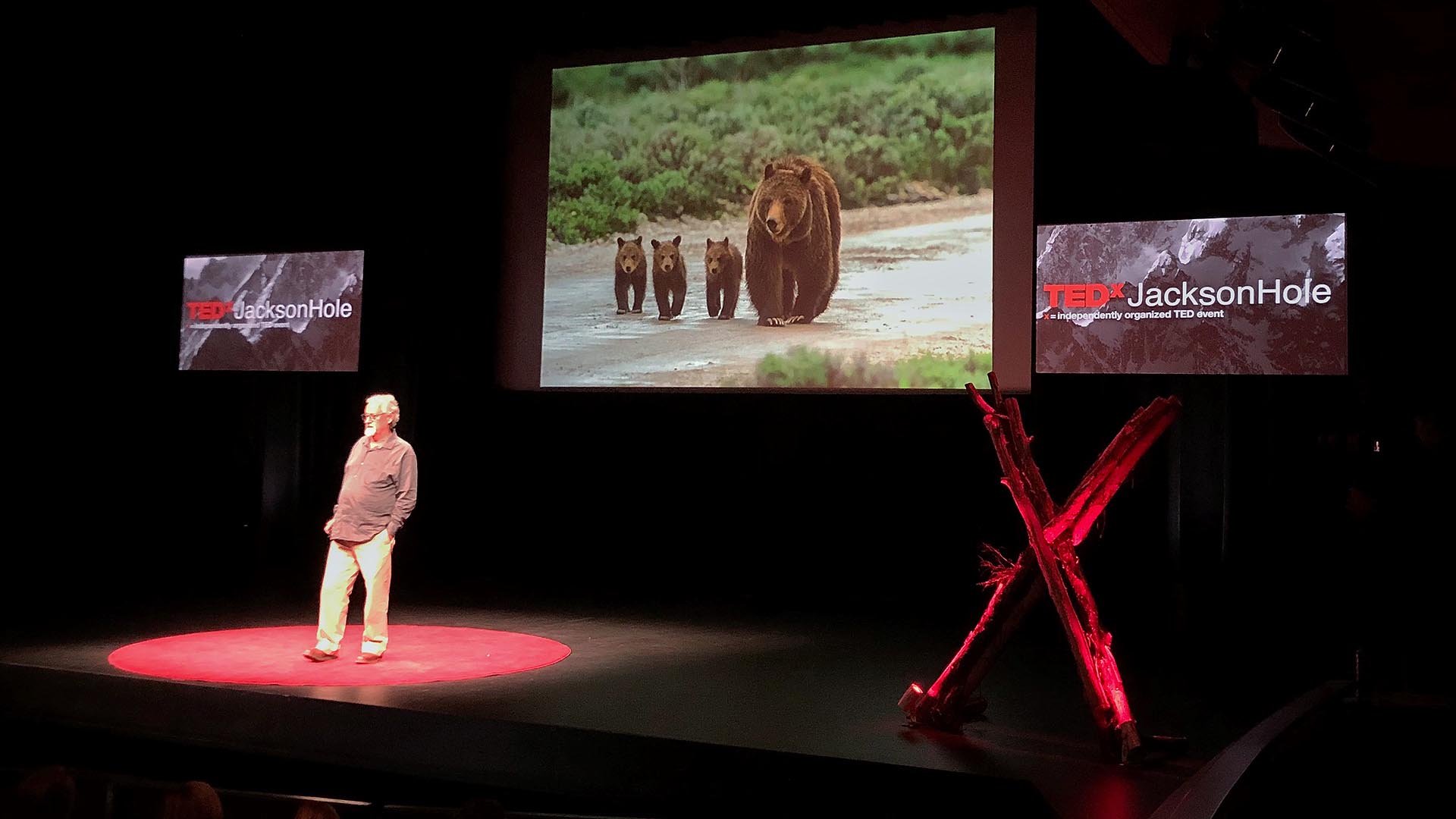
Photographer Tom Mangelsen
“I’d say that a bear encounter is the highlight of many visitors’ vacations,” says Sarah. And visitors are far from alone. 399 and her growing family is the highlight of Tom Mangelsen’s entire career. In his TEDx Jackson Hole presentation from 2019, “The Gift of the Grizzly,” Tom recalls the first time he saw 399 at the Oxbow Bend in Grand Teton National Park. “Little did I know that was the beginning of a twelve-year relationship,” he says. These grizzlies have truly taken hold of his heart, among thousands of others. “Her experience is a magical experience,” he says, barely holding back tears. “One that will not likely come again.”

